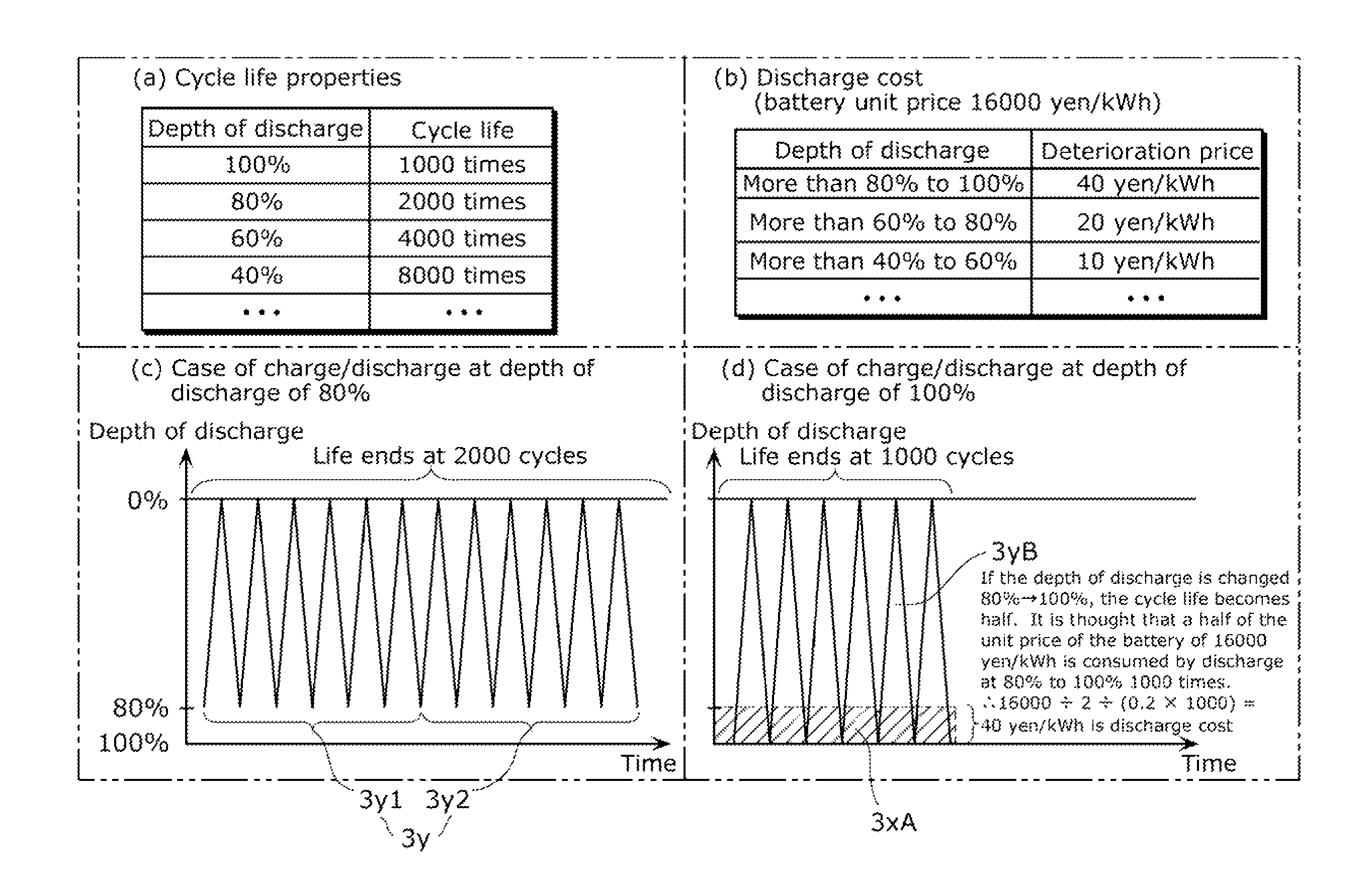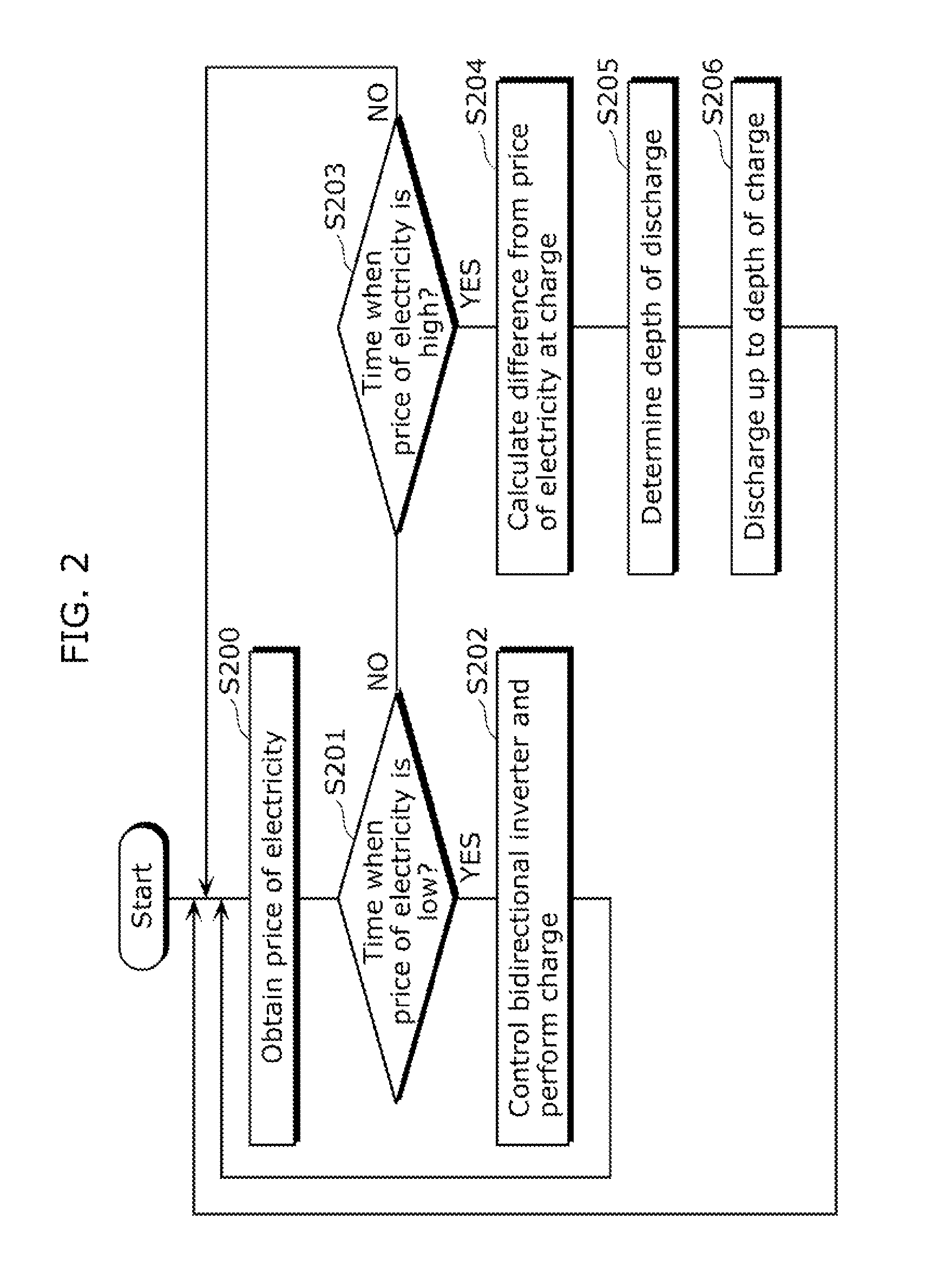Control device, charge storage system, control method, and computer program
a technology control device, applied in the field can solve problems such as deterioration of storage battery, and achieve the effect of maximizing the economic merits of electric power storage system
- Summary
- Abstract
- Description
- Claims
- Application Information
AI Technical Summary
Benefits of technology
Problems solved by technology
Method used
Image
Examples
embodiment 1
[Embodiment 1]
[0036]FIG. 1 is a block diagram of an electric power storage system 1a according to Embodiment 1.
[0037]The electric power storage system 1a includes a connection unit 11, a bidirectional inverter 12, a storage battery 13, and a controller 14.
[0038]The connection unit 11 is a connection terminal to the commercial power system 10, and accommodates a circuit breaker for protecting the commercial power system 10 and the bidirectional inverter 12 from an accident.
[0039]The bidirectional inverter 12 is connected to the commercial power system 10 via the connection unit 11, and bidirectionally converts the alternating current of the commercial power system 10 and the direct current of the storage battery 13. The direction and amount of electric power to be converted by the bidirectional inverter 12, i.e., the direction and amount of the storage battery 13 to be charged and discharged is instructed by the controller 14.
[0040]The storage battery 13 temporarily stores the electr...
embodiment 2
[Embodiment 2]
[0062]In the electric power storage system 1a in FIG. 1, examine the case where the relationship between the depth of discharge x of the storage battery 13 (0≦x≦1) and the cycle life N is given by a function N(x). In this case, if the current time is t=0 and a next cost function TC(·) is minimized, the amount of electric power to be charged and discharged of the storage battery 13Δst at each time t (=0, 1, . . . T−1) can be determined.
[0063][Math.1]TC(Δs0,Δs1,…,ΔsT-1)=∑t=0T-1{PC(Δst,t)+PC·N(1-st / C)-N(1-st+1 / C)N(1-st / C)N(1-st+1 / C)·u(-Δst)}(1)
[0064]Here, a function PC(Δst, t) of the first term within the curly brackets in (1) designates the electricity price produced within a time step at the time t wherein the amount of electric power to be charged and discharged of the storage battery 13 at the time t is Δst. Here, if the price of electricity (unit price) at the time t obtained from the electricity price server 21 is expressed with R(t), the funct...
embodiment 3
[Embodiment 3]
[0090]FIG. 5 is a block diagram of an electric power storage system is according to Embodiment 3.
[0091]In FIG. 5, same reference numerals will be given to same components as those in FIG. 1, and the description thereof will be properly omitted.
[0092]As shown in FIG. 5, in the case where the electric power storage system is installed with an electric power consuming apparatus 51 in a location of a user, if the electric power consuming apparatus 51 has a small demand for electric power, discharge by the electric power storage system may cause reverse power flow (selling) to the commercial power system 10. In this case, a wattmeter 52 is installed, and the controller 14 determines the amount of electric power to be charged and discharged Δst such that the reverse power flow is not produced. Alternatively, considering the selling price at the time of the reverse power flow, the controller 14 may calculate the function PC(Δst, t). In order to perform these, usually, predict...
PUM
 Login to View More
Login to View More Abstract
Description
Claims
Application Information
 Login to View More
Login to View More - R&D
- Intellectual Property
- Life Sciences
- Materials
- Tech Scout
- Unparalleled Data Quality
- Higher Quality Content
- 60% Fewer Hallucinations
Browse by: Latest US Patents, China's latest patents, Technical Efficacy Thesaurus, Application Domain, Technology Topic, Popular Technical Reports.
© 2025 PatSnap. All rights reserved.Legal|Privacy policy|Modern Slavery Act Transparency Statement|Sitemap|About US| Contact US: help@patsnap.com



